Harvesting dahlia seeds can be lots of fun. Each seed collected has the potential to grow into a brand new dahlia plant that has never been seen before. Dahlia seeds will not bloom true to the parent plants, and the plants that grow from the seeds will be new hybrids. Learn how to collect dahlia seeds, and experience the anticipation of creating new dahlia blooms.
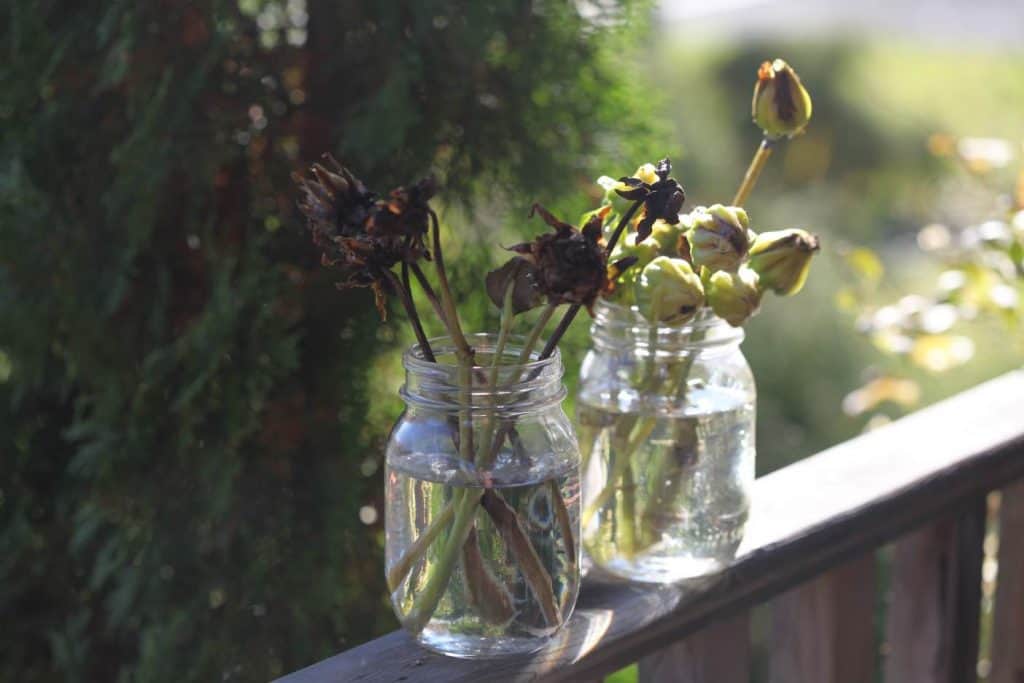
To collect dahlia seeds, allow the flowers to remain on the plant to form seed pods. Successfully pollinated dahlia flowers will develop seeds pods with seeds. It's important that the pods remain on the plant to mature, for seed viability. Seed pods will be mature at 6 to 8 weeks post pollination. Harvest the pods when close to maturity, and allow them to dry out before collecting the seeds.

Follow along to learn more about collecting dahlia seeds.
Can You Save Seeds From Dahlias?
If you allow the bees to fertilize the dahlias through open pollination, they will most likely develop pods with some seed. Bees are excellent pollinators.
Each seed inside the dahlia seed pod is genetically different, and will produce a unique plant.
You can save some dahlia seeds and try your luck growing them. The seeds may not produce a plant as beautiful as the parent plant, however you may be pleasantly surprised.
Dahlias are octoploids, meaning that they have eight sets of chromosomes. This large amount of genetic material provides a vast potential for different genetic combinations, and is the reason that dahlias are seen with so many different colours, forms, and sizes.
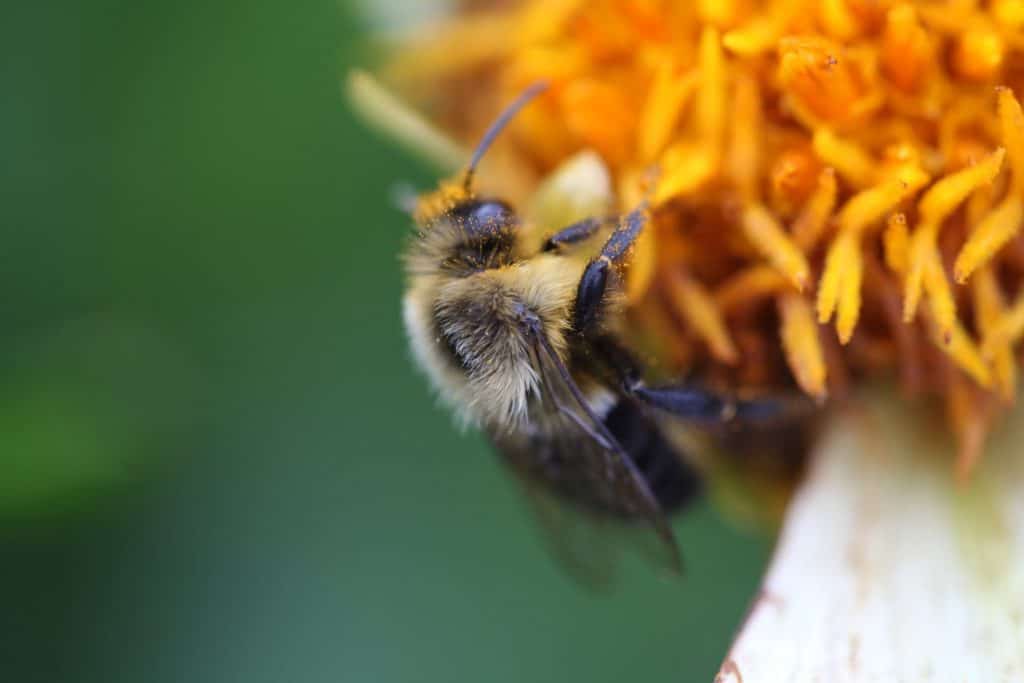
Dominant Traits
Most often the resulting plants will have single blooms with open centres, as these are dominant characteristics.
Species dahlias are simple single petalled blooms with open centres, and these are the plants from which todays fancy hybrids originated from through selective breeding. The single petalled opened centred booms are more dominant because they allow for easier pollination and seed set.
If you have other single dahlias in your garden, chances are that many of your seeds will be single blooms as well, since these are dominant traits.
If you have lots of similar plants together however there is a likelihood that the bees will travel from one bloom to another, cross pollinating these blooms. Planting like blooms and forms together increases the likelihood of cross-pollinating these particular plants.

I love the large decorative dahlias, and have planted several long rows with these dahlias together in hopes of getting some wonderful crosses.
The chances of producing a dahlia plant worthy of registration from a seed pollinated by bees is about one in one thousand.
By hybridizing and transferring the pollen yourself the chances of the seed growing into a beautiful blooming plant worthy of registration will increase to about one in one hundred.

What Do Dahlia Seed Pods Look Like?
Dahlia seed pods are formed if the dahlia flower has been fertilized by either a hybridizer spreading pollen, or the bees doing the same. I like to let the bees do the hard work of spreading the pollen and setting the dahlia seed pods.
After the fertilized dahlia bloom is spent, the petals start to dry up and then fall off. The pod itself begins to gradually close shut.
The pod is usually round and plump with a pointed end at the opening where the bracts have closed up.
The dahlia seed pod turns from a green to a yellowish or tan colour with a black centre at the opening when mature. Darker foliaged dahlias however will have darker seed pods.
Eventually as the pod matures and dries, it will turn brown and papery.
The pod is mature at about six to eight weeks from pollination.



What Do Dahlia Seeds Look Like?
When I first began to collect dahlia seeds, I found it a bit confusing. Many pieces of what look like seeds were not mature seeds at all.
Rather they were beginnings of seeds, and those that were not pollinated or viable.
When you finally find a mature dahlia seed amongst the contents of your seed pod, you will then understand what they really look like.
Dahlia seeds are long and somewhat flat in shape, with a slight narrowing at each end. They are usually dark brown or black when they are mature.
They are usually very firm to the touch, and this is often how I find the seeds amongst the chaff. Any firmness will often be a mature viable seed.



How To Collect Dahlia Seeds
Timing of seed pod collection is important to get viable dahlia seeds.
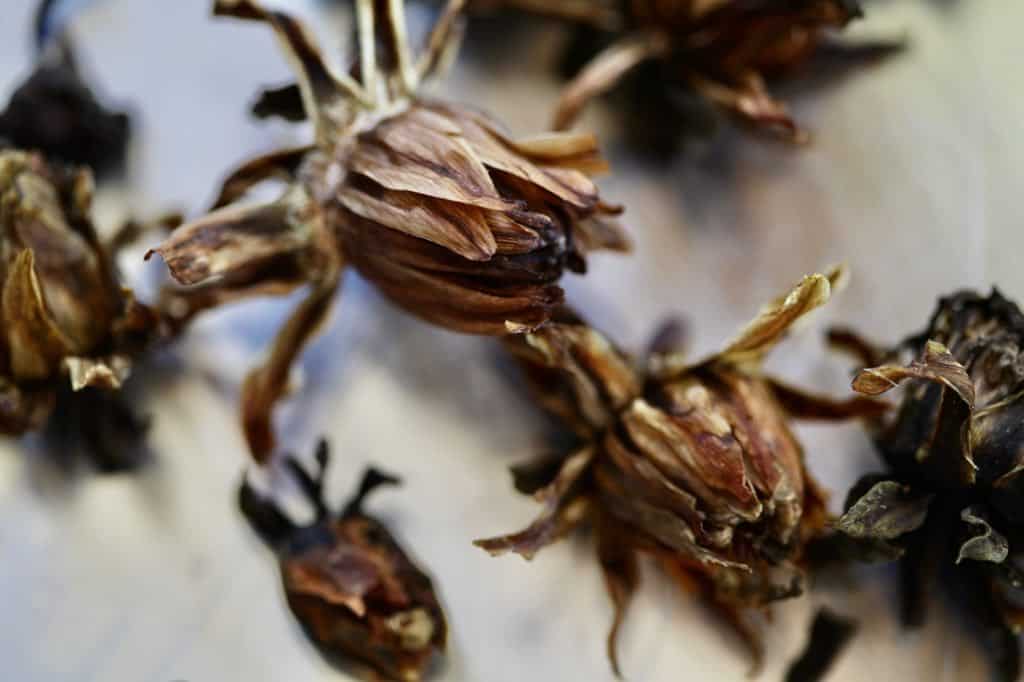
Harvest The Pods
- It is best to allow the dahlia seed pods to mature on the plant. Leave the pods on the plant as long as you can for best results.
- You can check on the maturity of the seeds by pulling back the bracts on the pod. If you see a large dark black or brown seed, that is an indication of maturity and the pod can be harvested.
- Sometimes however you may not see a seed when using this technique to determine maturity. Sometimes my pods have very few large dark seeds, and sometimes they are deeper inside the pod.
- Squeezing the dahlia seed pod is another way to check maturity. If there is a liquid at the opening of the pod when squeezed, then it is not yet mature.
- Sometimes there will be weather elements that can interfere with the developing pods. Heavy rains can cause rotting of the pods. As well, frost will damage the pods which can also lead to rotting.
- The seed pods can be cut a little early before they are completely mature if need be, and brought inside to further dry before removing the seeds.
- I will do this if there is a predicted frost to protect the pods.
- Check to make sure that the seed pods are mature before harvesting.
- When you are ready to harvest the pods, cut the stems under the pods at about six inches from the pods themselves. This will allow a good sized piece of stem to insert into a container of water if you choose to do so.



Label The Pods
- Make sure to accurately label your seed pods as you are collecting them. Note the name of the parent plant which you have harvested the pods from, if the pods have been open pollinated by bees.
- If you have hybridized the dahlia yourself there should be a label attached to the stem and secured into place.

Dry The Pods
- Bring the seed pods inside into a dry warm environment.
- Some people hang their dahlia pods to dry for several months before harvesting the seeds.
- I prefer to place them in containers of water such as mason jars or glasses, and allow them to dry for several weeks in this manner. This allows the seed heads to dry completely before checking for seeds.
- It also allows the pods to ripen a little more, just in case they were not fully ripe when harvested.
- Change the water as needed during this drying out phase.
- After several weeks you can remove the seed pod and place on a tray to further dry out.



Collect The Seeds
- When the mature dahlia seed pod is dried, it is time to collect the dahlia seeds. It makes the process much easier, and the contents of the pod falls easily away from the base.
- Some seed collectors will collect the seeds when the pod is still moist, and this is okay too. It will just not be as easy to separate the chaff from the seed with a moist pod.
- Choose a clean dry surface on which to open your dahlia seed pod. I like to use a light coloured plate, but really any surface will do.

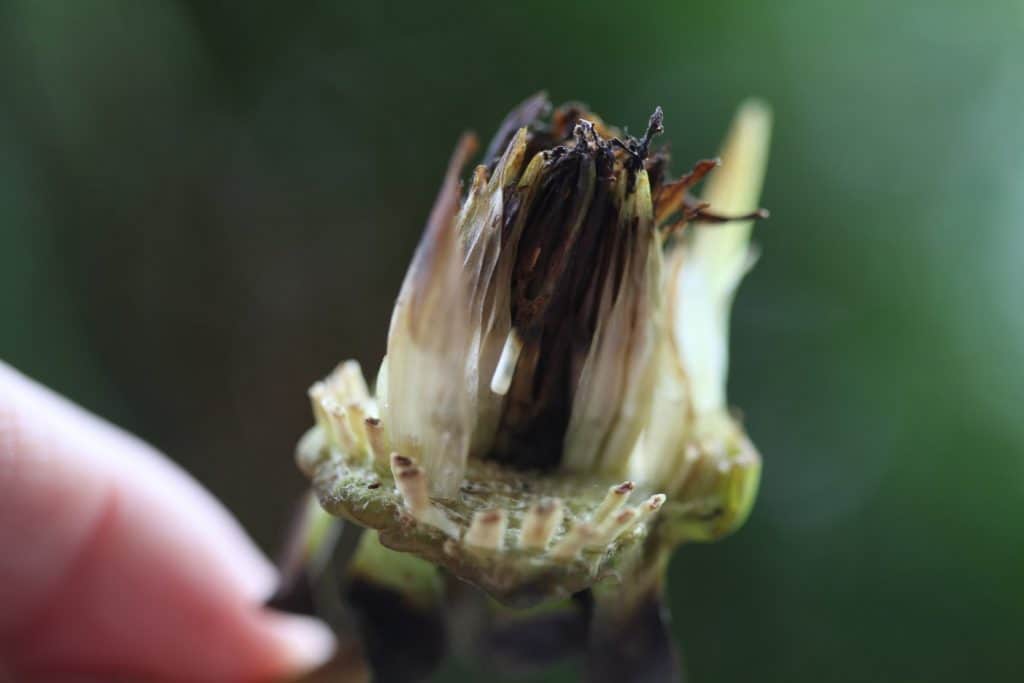

- Break open the seed pod and pull all the parts from the base.
- Dahlia seeds can be difficult to find unless you know exactly what you are looking for and looking at.
- Sift through the chaff, and pull out the firm and dark seeds. The viable seeds are firm, large and dark coloured. Once you have identified them you will know what to further look for with any other pods.
- Place the viable seeds aside on a clean piece of paper towel until you have separated all the seeds from the chaff.
- Not all pods will have seeds from my experience, and sometimes seeds can be few and far between. Some pods had one or two seeds, and others had up to five or six viable seeds.
- This may be because our blooming time and pollination window is so late in our season.


Drying Dahlia Seeds
- As with most seed, it's important to dry out your dahlia seeds before storing them safely away.
- Once you have collected all the seed, spread them out to dry.
- Allow to air dry for twenty four hours. I usually leave them on a plate for this period of time, moving them around from time to time to get the surfaces dry.
- After drying the seeds it's time to store them away until they are ready to be planted.



How Do You Store Dahlia Seeds
Store the dahlia seeds in a paper envelope which will help to keep them dry.
Paper works much better than plastic, as it keeps the moisture off the seeds and helps to prevent moulding.
Label the envelope with the parent plant and date of collection. If the bees have done the pollinating, you will only know the pod parent. If you have done the hybridizing and labeled your cross, place the names of both parents on the envelope.
Store in a cool and dry place, until you are ready to plant the seeds next spring.
Dahlia seeds are best started indoors to give them a head start on the growing season. They can then be transplanted out into the garden once the chance of all spring frost has passed.
Growing new plants can be such an exciting experience. I encourage anyone to give it a try, as you just never know what you will discover.

Dahlia Seed Pods In Zone 5b
Every year we try to harvest a few dahlia seeds.
Here in zone 5b we are not able to get our dahlias into the ground until around mid May, and therefore many of the dahlia plants will not bloom until September, or even October.
This is quite late to be developing seed pods, as frost looms on the horizon shortly after blooming begins.
We harvest every bloom that we can, so not many seed pods have an opportunity to form. Those that are left to go to seed often cannot complete the seed making process before the first frost sets in.
Seed pods will require at least six to eight weeks from pollination to form viable seeds.
We had early frosts last year, although I was still able to get some pods and a few resulting seeds, which was really exciting.
This year our dahlias had an extended season, and bloomed throughout the month of October and into November. It was amazing to see the colourful dahlia blooms when the rest of the flowers at the farm were long since spent. The dahlias were the last of the blooming flowers and they put on quite a show.
Due to the extended season, the dahlias were able to set some seed pods. Most of our dahlia seed pods were collected from Cafe Au Lait dahlias.
This year the bees did the work of spreading the pollen, and we had great success and lots of pods were formed.

Frequently Asked Questions
How Are Dahlias Propagated?
Dahlias are perennial tuberous flowering plants. The plants grow from tubers, which are planted in the garden in spring.
Some warmer growing zones can overwinter the tubers in the ground, however many have to lift and divide the tubers in the fall, and safely store them away until next season.
Dahlias can be propagated by division of the tubers, by cuttings, and also by seed.
Division by tubers or cuttings will result in plants exactly like the parent plant, and are a clone of the parent.
Dahlias grown from seed however will be new hybrids, and may or may not be similar to the parent plant. Growing dahlias from seed will result in a brand new plant.
Dahlia growers can multiply their stock of a single dahlia plant through division of tubers and also by taking cuttings. Cuttings will root and eventually grow tubers themselves.

Will Dahlia Seeds Turn Into Tubers?
Dahlias grown from seed will eventually grow tubers. You may even discover some small tubers on plants at the end of their first growing season.
As the plant ages the tubers will become larger, and eventual tuber size will be dependent on the genetics of the individual dahlia plant.
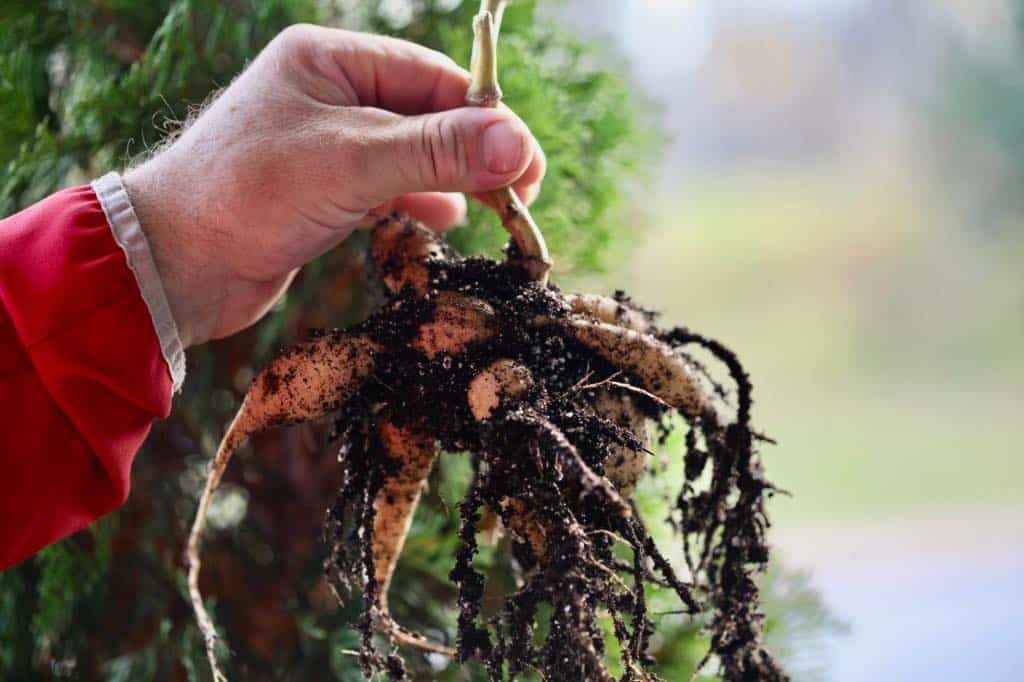
Is It Easy To Start Dahlias From Seed?
It is very easy to start dahlias from seed, and in fact can be quite an exciting process. You never know what the new dahlia plant will eventually look like until it blooms.
Start the seeds early indoors under lights to give the new dahlia seedlings a head start on the season. With lots of growing time, you may even see blooms at the end of the first growing season.

Conclusion
Collecting dahlia seeds is a fun and exciting gardening activity.
If you grow dahlias, and your growing zone allows for 6 to 8 frost free weeks post bloom, you will likely be able to collect lots of viable dahlia seeds.
If you live in a colder climate however, consider starting some of your dahlias early indoors, for earlier blooms. This hopefully will provide enough time for seed collection, before the first frosts of fall.

Have you ever collected dahlia seeds from your garden? Be sure to leave a comment below to share your experience!
OTHER POSTS YOU MAY LIKE:
See the Web Story on Collecting Dahlia Seeds!
PIN IT FOR LATER!




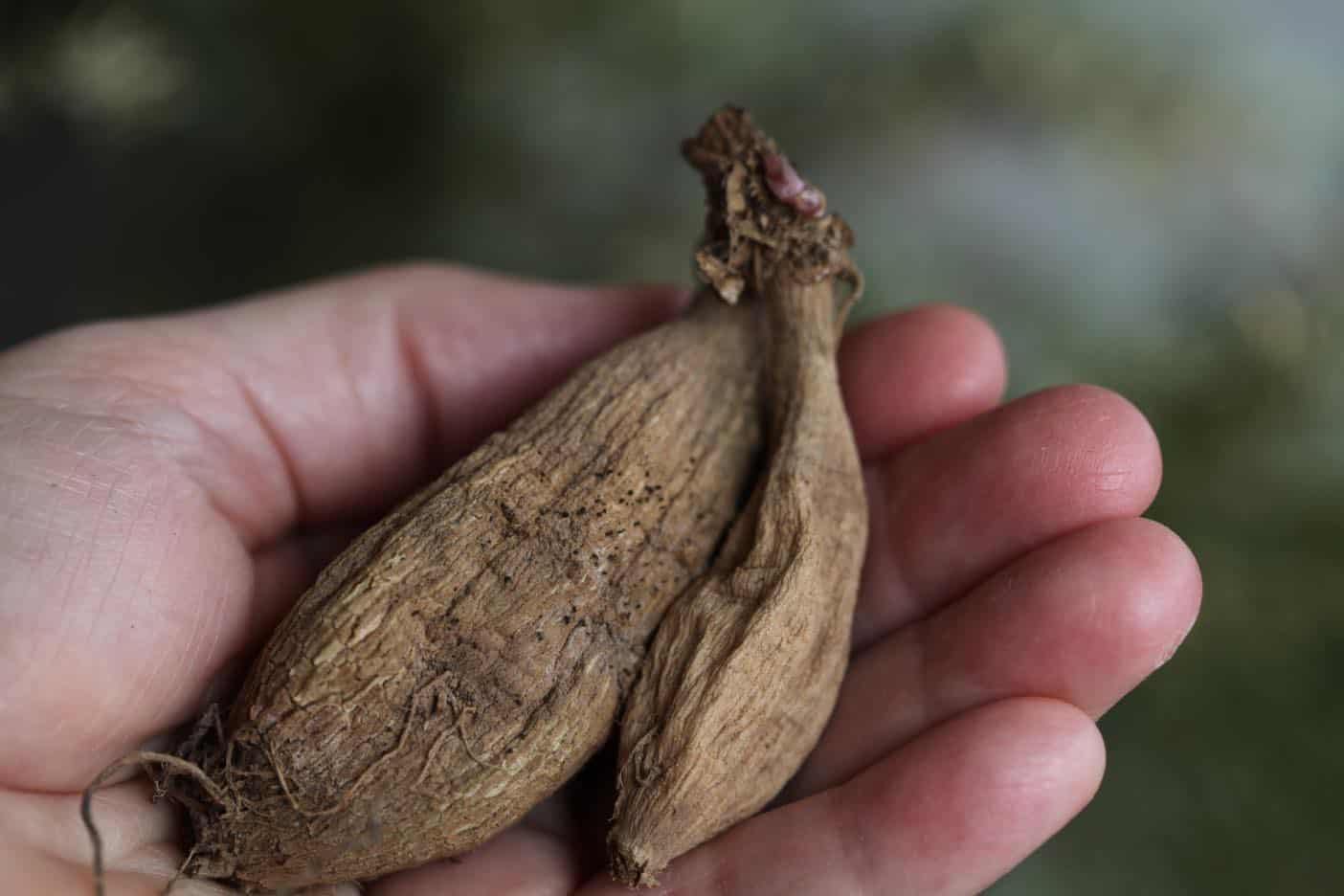





James Jennings
Thanks for the informative article on dahlia seeds. I have grown dahlias from seeds and out of 48 seeds planted, I did manage to get two plants to grow. One is a double petal creamy white flower and the other one is a single petal red. I am thrilled that they keep blooming. Zone 9B.
cheyanne
Thank you for your comment! So good to hear of your success with your seedlings. Single petals are most common, so you did well to get your double!